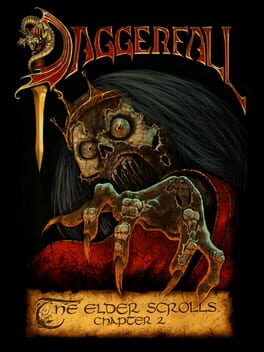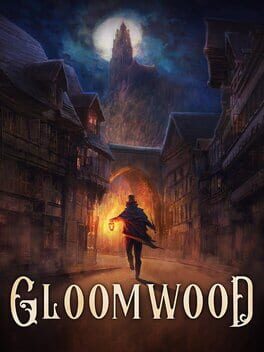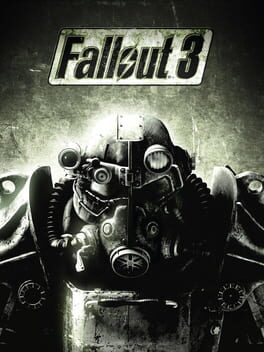SSS_Keita
The Elder Scrolls II: Daggerfall, released in 1996, was a groundbreaking RPG for its time, boasting a colossal open world that was revolutionary for its era. While it laid the foundation for the iconic Elder Scrolls series, it comes with both commendable strengths and notable weaknesses.
One of Daggerfall's most impressive aspects is the sheer scale of its game world. Covering a staggering 62,000 square miles, it offers an unparalleled sense of exploration and freedom. The procedural generation of cities and dungeons adds to the sense of vastness, ensuring that no two playthroughs are exactly alike. The scope of this ambitious undertaking is undoubtedly commendable.
The character creation and role-playing mechanics in Daggerfall are also noteworthy. Players have the freedom to shape their characters' backgrounds, selecting from a wide range of races, classes, and skills, providing countless possibilities for customizing the hero's journey.
Moreover, the depth of lore and world-building in Daggerfall is exemplary, with rich storytelling and immersive quests that keep players engaged for hours on end. The political intrigue, factions, and various storylines contribute to a captivating experience, especially for those who appreciate intricate narratives.
On the other hand, Daggerfall's vastness and procedural generation come at a price. The game's graphics, even by 1996 standards, are outdated and lack the polish seen in modern RPGs. The massive game world can also lead to a daunting and often confusing experience for new players, who may feel lost or overwhelmed without clear direction.
Furthermore, Daggerfall suffers from numerous bugs and technical issues that were prevalent in games of its time. Although understandable given the era's limitations, these technical shortcomings can hinder the overall enjoyment of the game.
TL;DR: The Elder Scrolls II: Daggerfall is a pioneering RPG with an enormous open world, offering freedom and exploration. Customizable character creation and rich lore contribute to a captivating experience. However, outdated graphics, technical issues, and lack of guidance may deter some modern players. A classic gem for RPG enthusiasts interested in gaming history.
One of Daggerfall's most impressive aspects is the sheer scale of its game world. Covering a staggering 62,000 square miles, it offers an unparalleled sense of exploration and freedom. The procedural generation of cities and dungeons adds to the sense of vastness, ensuring that no two playthroughs are exactly alike. The scope of this ambitious undertaking is undoubtedly commendable.
The character creation and role-playing mechanics in Daggerfall are also noteworthy. Players have the freedom to shape their characters' backgrounds, selecting from a wide range of races, classes, and skills, providing countless possibilities for customizing the hero's journey.
Moreover, the depth of lore and world-building in Daggerfall is exemplary, with rich storytelling and immersive quests that keep players engaged for hours on end. The political intrigue, factions, and various storylines contribute to a captivating experience, especially for those who appreciate intricate narratives.
On the other hand, Daggerfall's vastness and procedural generation come at a price. The game's graphics, even by 1996 standards, are outdated and lack the polish seen in modern RPGs. The massive game world can also lead to a daunting and often confusing experience for new players, who may feel lost or overwhelmed without clear direction.
Furthermore, Daggerfall suffers from numerous bugs and technical issues that were prevalent in games of its time. Although understandable given the era's limitations, these technical shortcomings can hinder the overall enjoyment of the game.
TL;DR: The Elder Scrolls II: Daggerfall is a pioneering RPG with an enormous open world, offering freedom and exploration. Customizable character creation and rich lore contribute to a captivating experience. However, outdated graphics, technical issues, and lack of guidance may deter some modern players. A classic gem for RPG enthusiasts interested in gaming history.
2022
2022
Prepare yourself for a descent into utter despair and disappointment with Gloomwood, a game that fails to deliver on its promises and leaves players longing for any glimmer of enjoyment. From its unremarkable gameplay to its lackluster atmosphere, this dark and dreary experience will leave you questioning your choices and yearning for brighter horizons.
Let's start with the gameplay, or lack thereof. Gloomwood presents itself as a first-person stealth-horror game, but its mechanics are as murky as the shadows that engulf its dreary environments. The stealth mechanics feel clunky and imprecise, making it frustratingly difficult to sneak past enemies or execute stealth takedowns effectively. Coupled with inconsistent AI behavior, the experience becomes a guessing game of trial and error rather than a strategic dance of shadows.
The level design in Gloomwood is equally underwhelming. Instead of offering intricate and captivating environments, the game bombards players with a seemingly endless array of dull, repetitive corridors and uninspired rooms. Exploration quickly becomes a monotonous slog through indistinguishable spaces, devoid of any meaningful rewards or surprises. The lack of variety in the environments only adds to the sense of tedium and disinterest.
While a dark and brooding atmosphere can be effective in a horror game, Gloomwood takes it to an extreme, leaving players trapped in a monochromatic nightmare. The relentless gloom and lack of visual diversity contribute to a visually stagnant experience that becomes tiresome and visually uninteresting within minutes. It feels like the game is intentionally trying to drain every ounce of joy from your gaming experience.
The audio design does little to alleviate the suffocating mediocrity of Gloomwood. The sparse and repetitive sound effects fail to create a sense of immersion or tension. Instead, they serve as a constant reminder of the game's lack of ambition and attention to detail. The absence of a memorable soundtrack further contributes to the overall sense of emptiness and missed opportunities.
The narrative, if it can be called such, is a disjointed mess that fails to engage or captivate. The minimalistic storytelling leaves players grasping for any semblance of meaning or purpose. Characters are forgettable and lack depth, rendering any attempt at building a compelling narrative utterly futile. It's a jumbled mess of vague hints and half-baked ideas that never come together to form a coherent and satisfying experience.
In summary, Gloomwood is a game that squanders its potential at every turn. Its lackluster gameplay, uninspired level design, and oppressive atmosphere combine to create an experience that is as dreary as its name suggests. With its underwhelming audio design and disjointed narrative, Gloomwood serves as a prime example of missed opportunities and unfulfilled promises. Save yourself from the gloom and seek brighter gaming experiences elsewhere.
TLDR: Hope it gets better and I can stop nitpicking it xD
Let's start with the gameplay, or lack thereof. Gloomwood presents itself as a first-person stealth-horror game, but its mechanics are as murky as the shadows that engulf its dreary environments. The stealth mechanics feel clunky and imprecise, making it frustratingly difficult to sneak past enemies or execute stealth takedowns effectively. Coupled with inconsistent AI behavior, the experience becomes a guessing game of trial and error rather than a strategic dance of shadows.
The level design in Gloomwood is equally underwhelming. Instead of offering intricate and captivating environments, the game bombards players with a seemingly endless array of dull, repetitive corridors and uninspired rooms. Exploration quickly becomes a monotonous slog through indistinguishable spaces, devoid of any meaningful rewards or surprises. The lack of variety in the environments only adds to the sense of tedium and disinterest.
While a dark and brooding atmosphere can be effective in a horror game, Gloomwood takes it to an extreme, leaving players trapped in a monochromatic nightmare. The relentless gloom and lack of visual diversity contribute to a visually stagnant experience that becomes tiresome and visually uninteresting within minutes. It feels like the game is intentionally trying to drain every ounce of joy from your gaming experience.
The audio design does little to alleviate the suffocating mediocrity of Gloomwood. The sparse and repetitive sound effects fail to create a sense of immersion or tension. Instead, they serve as a constant reminder of the game's lack of ambition and attention to detail. The absence of a memorable soundtrack further contributes to the overall sense of emptiness and missed opportunities.
The narrative, if it can be called such, is a disjointed mess that fails to engage or captivate. The minimalistic storytelling leaves players grasping for any semblance of meaning or purpose. Characters are forgettable and lack depth, rendering any attempt at building a compelling narrative utterly futile. It's a jumbled mess of vague hints and half-baked ideas that never come together to form a coherent and satisfying experience.
In summary, Gloomwood is a game that squanders its potential at every turn. Its lackluster gameplay, uninspired level design, and oppressive atmosphere combine to create an experience that is as dreary as its name suggests. With its underwhelming audio design and disjointed narrative, Gloomwood serves as a prime example of missed opportunities and unfulfilled promises. Save yourself from the gloom and seek brighter gaming experiences elsewhere.
TLDR: Hope it gets better and I can stop nitpicking it xD
2008
2001
Halo Combat Evolved, the game that revolutionized the first-person shooter genre, continues to stand tall as an unforgettable masterpiece even years after its initial release. From its gripping narrative to its innovative gameplay mechanics, this iconic title is an experience that defines the very essence of gaming greatness.
Step into the shoes of Master Chief, a super-soldier clad in his formidable MJOLNIR armor, and prepare to embark on an epic adventure across the rings of Halo. The game wastes no time in immersing players into a richly crafted sci-fi universe filled with mystery, danger, and awe-inspiring vistas. The captivating storyline, with its twists and turns, draws players in and never lets go, keeping them engaged until the very end.
One of the game's greatest strengths lies in its unrivaled level design. Each mission presents a carefully constructed playground of action and exploration, offering a perfect balance between intense combat encounters and moments of breathtaking beauty. Whether you're storming enemy bases, traversing vast landscapes, or engaging in heart-pounding vehicle-based warfare, the variety and intricacy of the environments are simply astonishing.
Halo Combat Evolved also introduced a groundbreaking multiplayer experience that forever changed the landscape of competitive gaming. From chaotic skirmishes to tactical team-based battles, the multiplayer mode offered endless hours of adrenaline-fueled fun. Whether through split-screen mayhem with friends or online matches against players around the world, the game's multiplayer forged friendships, rivalries, and unforgettable memories.
The gameplay mechanics are nothing short of extraordinary. The intuitive controls allow for precise shooting, seamless movement, and exhilarating acrobatics. The arsenal of weapons at your disposal is diverse and satisfying, each one with its own distinct feel and strategic value. Mastering the art of combat feels incredibly rewarding, as you experiment with different approaches and unleash devastating combos against your foes.
Halo Combat Evolved's audiovisual presentation is a true feast for the senses. The epic orchestral score, composed by the legendary Martin O'Donnell, perfectly complements the game's grandiose moments and heightens the emotional impact of every encounter. The stunning graphics, considering the time of its release, were groundbreaking, bringing to life a vibrant world teeming with life and detail.
Lastly, the game's enduring legacy is a testament to its exceptional quality. It laid the foundation for one of the most beloved and successful franchises in gaming history. Halo Combat Evolved not only established the benchmark for future entries in the series but also left an indelible mark on the industry as a whole, influencing countless other games and inspiring generations of players.
In conclusion, Halo Combat Evolved is a landmark title that showcases the true potential of video games as an immersive art form. With its gripping narrative, unrivaled level design, innovative gameplay mechanics, and lasting impact, it remains an unparalleled masterpiece. If you haven't experienced the magic of Halo Combat Evolved, now is the perfect time to embark on a legendary journey that will captivate you from start to finish. Prepare to be enthralled by a game that has rightfully earned its place among the pantheon of gaming greats.
Step into the shoes of Master Chief, a super-soldier clad in his formidable MJOLNIR armor, and prepare to embark on an epic adventure across the rings of Halo. The game wastes no time in immersing players into a richly crafted sci-fi universe filled with mystery, danger, and awe-inspiring vistas. The captivating storyline, with its twists and turns, draws players in and never lets go, keeping them engaged until the very end.
One of the game's greatest strengths lies in its unrivaled level design. Each mission presents a carefully constructed playground of action and exploration, offering a perfect balance between intense combat encounters and moments of breathtaking beauty. Whether you're storming enemy bases, traversing vast landscapes, or engaging in heart-pounding vehicle-based warfare, the variety and intricacy of the environments are simply astonishing.
Halo Combat Evolved also introduced a groundbreaking multiplayer experience that forever changed the landscape of competitive gaming. From chaotic skirmishes to tactical team-based battles, the multiplayer mode offered endless hours of adrenaline-fueled fun. Whether through split-screen mayhem with friends or online matches against players around the world, the game's multiplayer forged friendships, rivalries, and unforgettable memories.
The gameplay mechanics are nothing short of extraordinary. The intuitive controls allow for precise shooting, seamless movement, and exhilarating acrobatics. The arsenal of weapons at your disposal is diverse and satisfying, each one with its own distinct feel and strategic value. Mastering the art of combat feels incredibly rewarding, as you experiment with different approaches and unleash devastating combos against your foes.
Halo Combat Evolved's audiovisual presentation is a true feast for the senses. The epic orchestral score, composed by the legendary Martin O'Donnell, perfectly complements the game's grandiose moments and heightens the emotional impact of every encounter. The stunning graphics, considering the time of its release, were groundbreaking, bringing to life a vibrant world teeming with life and detail.
Lastly, the game's enduring legacy is a testament to its exceptional quality. It laid the foundation for one of the most beloved and successful franchises in gaming history. Halo Combat Evolved not only established the benchmark for future entries in the series but also left an indelible mark on the industry as a whole, influencing countless other games and inspiring generations of players.
In conclusion, Halo Combat Evolved is a landmark title that showcases the true potential of video games as an immersive art form. With its gripping narrative, unrivaled level design, innovative gameplay mechanics, and lasting impact, it remains an unparalleled masterpiece. If you haven't experienced the magic of Halo Combat Evolved, now is the perfect time to embark on a legendary journey that will captivate you from start to finish. Prepare to be enthralled by a game that has rightfully earned its place among the pantheon of gaming greats.
2010
Fallout New Vegas, the fourth installment in the renowned Fallout series, presents players with a nuanced and ambivalent experience. While it builds upon the foundation set by its predecessor, Fallout 3, and introduces a new setting with potential, it falls short in some key areas.
One of the game's notable strengths lies in its setting. The post-apocalyptic rendition of Las Vegas and the Mojave Desert is a refreshing departure from the urban decay of previous entries. The dusty landscapes, dilapidated casinos, and remnants of civilization create a unique atmosphere that captures the essence of a decaying world. Exploring this vast and desolate wasteland can be captivating, with hidden treasures and memorable encounters around every corner.
The storyline is a double-edged sword. On one hand, the game presents a compelling narrative centered around a power struggle between factions vying for control over the Mojave. The intricate web of politics and alliances adds depth to the world and offers players a sense of agency in shaping their own path. However, the execution falls short at times, with some quests feeling uninspired or lacking in meaningful choices. The potential for impactful decision-making often falls flat, leading to a sense of missed opportunities and unfulfilled potential.
Gameplay mechanics retain the core elements of the series, offering a blend of exploration, combat, and character development. The vast array of weapons, armor, and perks allows players to tailor their playstyle to their liking. The addition of the faction reputation system brings a layer of consequence to the player's actions, as their choices can have far-reaching effects on how the various factions perceive and interact with them. However, the combat can feel clunky at times, and the AI lacks the intelligence and responsiveness seen in more modern titles, diminishing the overall experience.
Technically, the game also suffers from its fair share of issues. The game is notorious for its instability, frequent crashes, and game-breaking bugs that can hinder progress and frustrate players. While patches and community mods have addressed some of these issues over time, it remains disappointing that such significant problems mar the experience, especially given the game's hype and pedigree.
New Vegas falls short of the graphical standards set by other contemporary titles. The textures appear dated, character models lack detail, and the overall aesthetic lacks the visual polish expected in a modern RPG. However, the game's art direction and environmental design compensate to some extent, capturing the desolate beauty of the post-apocalyptic world.
Ultimately, Fallout New Vegas is a game that offers a mixed bag of experiences. It excels in its atmospheric setting and provides players with a vast and intriguing world to explore. However, its narrative execution, technical issues, and outdated visuals hold it back from reaching its full potential. Fans of the series will find enjoyment in immersing themselves in the Mojave Desert, but newcomers may find the flaws and rough edges harder to overlook.
One of the game's notable strengths lies in its setting. The post-apocalyptic rendition of Las Vegas and the Mojave Desert is a refreshing departure from the urban decay of previous entries. The dusty landscapes, dilapidated casinos, and remnants of civilization create a unique atmosphere that captures the essence of a decaying world. Exploring this vast and desolate wasteland can be captivating, with hidden treasures and memorable encounters around every corner.
The storyline is a double-edged sword. On one hand, the game presents a compelling narrative centered around a power struggle between factions vying for control over the Mojave. The intricate web of politics and alliances adds depth to the world and offers players a sense of agency in shaping their own path. However, the execution falls short at times, with some quests feeling uninspired or lacking in meaningful choices. The potential for impactful decision-making often falls flat, leading to a sense of missed opportunities and unfulfilled potential.
Gameplay mechanics retain the core elements of the series, offering a blend of exploration, combat, and character development. The vast array of weapons, armor, and perks allows players to tailor their playstyle to their liking. The addition of the faction reputation system brings a layer of consequence to the player's actions, as their choices can have far-reaching effects on how the various factions perceive and interact with them. However, the combat can feel clunky at times, and the AI lacks the intelligence and responsiveness seen in more modern titles, diminishing the overall experience.
Technically, the game also suffers from its fair share of issues. The game is notorious for its instability, frequent crashes, and game-breaking bugs that can hinder progress and frustrate players. While patches and community mods have addressed some of these issues over time, it remains disappointing that such significant problems mar the experience, especially given the game's hype and pedigree.
New Vegas falls short of the graphical standards set by other contemporary titles. The textures appear dated, character models lack detail, and the overall aesthetic lacks the visual polish expected in a modern RPG. However, the game's art direction and environmental design compensate to some extent, capturing the desolate beauty of the post-apocalyptic world.
Ultimately, Fallout New Vegas is a game that offers a mixed bag of experiences. It excels in its atmospheric setting and provides players with a vast and intriguing world to explore. However, its narrative execution, technical issues, and outdated visuals hold it back from reaching its full potential. Fans of the series will find enjoyment in immersing themselves in the Mojave Desert, but newcomers may find the flaws and rough edges harder to overlook.








